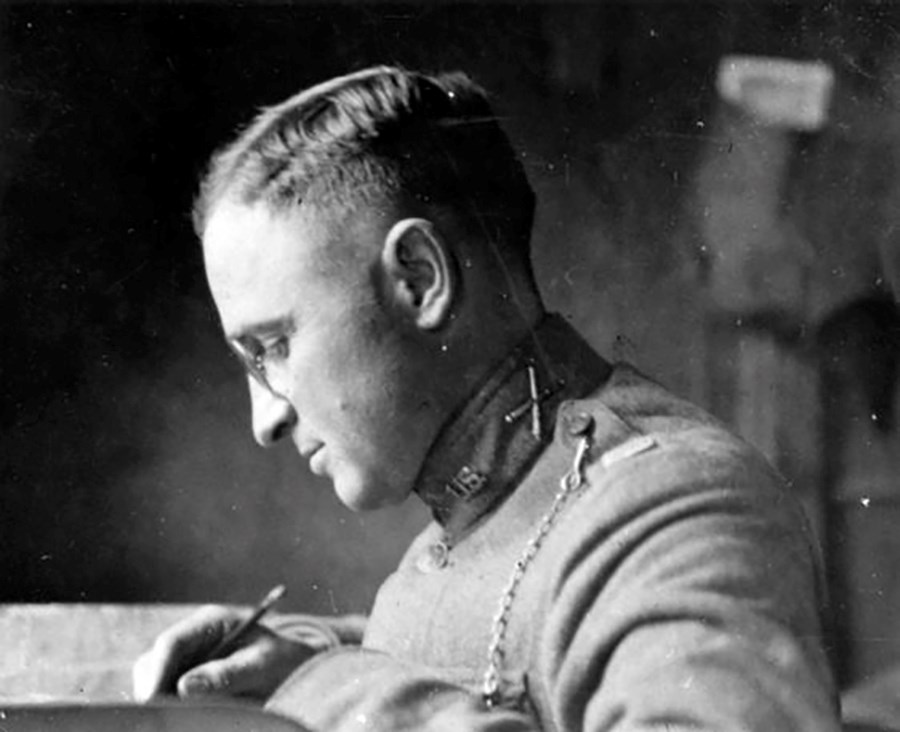Last updated: October 30, 2018
Article
Captain Harry Truman

In July 1918, the officers and men of the 129th Field Artillery moved to Camp Coetquidan in Brittany for advanced training in the use of the 75mm field gun under simulated combat conditions. It was here that Captain Truman took command of Battery D. Despite early attempts by some of the men to intimidate him, Truman made the noncommissioned officers accountable for discipline and promised to back them up. Battery D soon realized that Truman knew what he was doing and followed him loyally for the rest of the war.
Early in September 1918, the 129th Field Artillery undertook one of the longest and most brutal road marches of the war, from the Vosges mountains to the Argonne forest. The men guided their horses and equipment over one hundred miles of crowded, muddy back roads to the new American sector. This march and the five days of intense combat that followed were the ultimate test for Battery D. In the closing weeks of the war, the 129th Field Artillery moved into action for the final time on the old battlefields of Verdun. They fired their last shots fifteen minutes before the Armistice took effect. Battery D had fired more than 10,000 shells during the war.
Under Truman's command in France, his battery did not lose a single man in combat. His men often attributed their luck to the leadership of "Captain Harry." Their close bonds, forged on the battlefield, endured for the rest of their lives. Through service in the reserves, correspondence and reunions, the men stayed in touch with each other.
During his time in Europe, Harry continued to write to Bess Wallace. Engaged to be married, the two exchanged countless letters. Many of these letters are preserved today giving insight to life on the homefront and on the front lines. The two would finally be married in June 1919.
The war was a transformative experience that brought out Truman's leadership qualities. Despite beginning 1917 as a farmer who had been unsuccessful in several business ventures, Truman achieved a war record and leadership experience that supported his postwar political career in Missouri and beyond.

NPS Image
